This article was medically reviewed by Erik Kramer, DO, MPH and by wikiHow staff writer, Megaera Lorenz, PhD. Dr. Erik Kramer is a Board-Certified Primary Care Physician at the University of Colorado. With over 15 years of experience, his clinical interests include obesity and weight management, diabetes care, and preventive care, as well as embracing a holistic approach to primary care. He received his Doctorate in Osteopathic Medicine (D.O.) from the Touro University Nevada College of Osteopathic Medicine and completed his residency at Central Maine Medical Center. Dr. Kramer is a Diplomate of the American Board of Obesity Medicine.
There are 20 references cited in this article, which can be found at the bottom of the page.
This article has been viewed 26,726 times.
CSF, or cerebrospinal fluid, is a clear fluid that surrounds your brain to cushion and protect it. Sometimes an injury or pressure inside your skull can cause small tears or holes in the protective layer of tissue around your brain and spinal cord, which is called the dura mater. When this happens, CSF may run out of your nose. This condition is called CSF rhinorrhea.[1] CSF rhinorrhea can be caused by a head or spinal injury. Spontaneous CSF rhinorrhea, which is more common in women, can occur when pressure inside your brain, typically caused by idiopathic intracranial hypertension (IIH) (or pseudotumor cerebri), creates small holes between your nose and brain. While this sounds scary, CSF rhinorrhea can usually be treated effectively, and sometimes it even clears up on its own with proper rest and hydration. If you think you might have CSF rhinorrhea, see your doctor right away to get a diagnosis and figure out what’s causing the problem.
Things You Should Know
- Look out for classic symptoms, like a CSF leak in your nose or throat, dizziness, neck stiffness, headaches, or a salty/metallic taste in your mouth.
- If you have a CSF leak or have had a recent head trauma, call your doctor. Act quickly to avoid a worst case scenario, like meningitis.
- Most people heal from rhinorrhea with proper treatment, some after just a few days. Much of the time, rest and medication lead to a full recovery.
Steps
Symptoms
-
1Watch for clear, watery drainage from your nose. A CSF leak from your nose can look and feel very similar to a runny nose from a cold or allergies. See if this discharge gets worse when you bend over, tilt your head forward, strain your muscles, or get physically active.[2]
- You may notice the fluid coming from just one side of your nose.[3]
-
2Pay attention to the feeling of fluid running down your throat. Sometimes, fluid from a CSF leak will run down the back of your throat instead of out your nose. Watch for a tickling sensation in the back of your throat, or a feeling similar to the post-nasal drip you might get from a cold, allergies, or a sinus infection.[4]
- Discharge in the back of your throat can make your throat sore or irritated. You might feel the need to clear your throat or swallow frequently.[5]
Advertisement -
3Check for a salty or metallic taste in your mouth. Much like nasal mucus, cerebrospinal fluid can taste salty.[6] Some people also describe a metallic flavor.[7] You might notice a persistent odd taste in your mouth due to fluid drainage in the back of your throat.
- A metallic taste in your mouth can also have a variety of other causes, such as gum disease, a cold or sinus infection, or certain medications.[8]
-
4Make note of headaches that get better when you lie down. If you lose enough cerebrospinal fluid, your brain may press directly against the inside of your skull, which can cause a severe headache. See if the headache feels better when you lie down and gets worse when you sit up or stand, since these are common symptoms of a CSF leak.[9]
- These headaches might begin suddenly or come on gradually.
-
5Look for changes in your vision, hearing, or sense of smell. If you have a runny nose along with symptoms like blurred vision, double vision, or ringing in your ears, you may have a cerebrospinal fluid leak.[10] You may also lose some or all of your sense of smell.[11]
- Some people experience unusual sensitivity to light or sound.
-
6Keep an eye out for dizziness or balance problems. With a CSF leak, you might experience dizziness or feelings of vertigo. Look out for difficulty walking or balancing, too.[12]
- Along with dizziness, you might also experience nausea or vomiting.
-
7Note any pain or other unusual symptoms. A CSF leak can cause a variety of other symptoms, and they can differ from one person to another. If you have a runny nose and a headache, watch out for other possible symptoms of a CSF leak, such as:[13]
- Pain in your neck, upper back (between your shoulder blades), or arms
- Stiffness in your neck[14]
- Difficulty thinking or remembering things
- Tremors or involuntary movements
Diagnoses
-
1Call your doctor immediately if you suspect a CSF leak. If you think you might have a CSF leak, don’t wait. Call your doctor or go to an urgent care clinic immediately. A quick diagnosis and treatment will help ensure that you have a better, faster recovery.[15]
- The possibility of having a CSF leak can be frightening, but try not to worry. Most people recover very well with proper medical treatment. In some cases, a few days of rest is enough to help the leak heal.[16]
- An untreated CSF leak can sometimes lead to meningitis, an infection of the membranes around the brain and spinal cord. Getting your CSF leak diagnosed and treated quickly can help prevent this dangerous infection. Despite the risk of infection, your doctor likely won't give you antibiotics unless they're sure you have a bacterial infection. Taking antibiotics before the infection occurs doesn't help prevent it.
-
2Tell your doctor if you’ve had any recent facial or head injuries. CSF leaks often develop after trauma or injury to your face, head, or neck. Let your doctor know about any injuries you’ve had that might be related to your symptoms, since this will help them diagnose the problem.[17]
- For example, mention if you have recently been in a car accident, bumped your head in a fall, or were injured playing a sport.
- CSF leaks can also sometimes happen after strenuous activities, like lifting heavy objects, doing an intense workout, or even something like riding a roller coaster.[18]
-
3Discuss any health problems or recent medical procedures you’ve had. A CSF leak can sometimes develop after a medical procedure, such as an epidural, spinal tap, or surgery on your head or neck. It can also be a complication of certain medical conditions, like hydrocephalus (a buildup of excess CSF in your skull). Tell your doctor if you’ve had any medical procedures done or if you have any major health issues, even if they don’t seem directly related to your symptoms.[19]
Keep in mind: In rare cases, CSF rhinorrhea can start without any obvious cause. This is called “spontaneous CSF rhinorrhea.” You might be at higher risk of developing a spontaneous CSF leak if you have high blood pressure or struggle with obesity.[20]
-
4Let your doctor perform a physical exam. If your doctor suspects a CSF leak, they’ll probably start with a physical exam. Allow them to examine your nose and ears. They may also ask you to bend forward to see if the drainage of fluid from your nose increases.[21]
- They might pass a long, thin tube, called an endoscope, into your nose to get a closer look. Your doctor will give you a decongestant spray and a numbing medication to make this process more comfortable.[22]
-
5Allow them to collect samples of your nasal fluid for testing. To make sure that the fluid coming from your nose is CSF and not just nasal mucus, your doctor may need to take a sample. Let them collect some of the fluid so that they can send it to a lab for analysis.[23]
- In most cases, your doctor will be able to easily collect a specimen by letting it run directly into a small test tube or plastic pipette.[24]
- The lab will test the fluid for a protein called beta-2 transferrin, which is only found in cerebrospinal fluid.
-
6Consent to a CT scan or other tests to find the location of the leak. If your doctor confirms that you have a CSF leak, they may need to run other tests to find the source of the leak. These can include imaging tests, such as a CT or MRI scan, or special X-rays that involve injecting a contrast material into your spine to make possible leaks more visible.[25]
- In some cases, your doctor might want to do a lumbar puncture (or spinal tap) to test how much CSF you have. This sounds a bit scary, but your doctor will give you a local anesthetic to make the process more comfortable. You may feel a pinch or sting from the anesthetic injection, and then some pressure as the needle enters your spine.[26]
- Depending on your symptoms, they may also send you for additional tests, such as an eye exam or hearing test.[27]
Treatment
-
1Stay on bed rest for several days to allow the leak to heal. In some cases, all you need to clear up your CSF rhinorrhea is a few days of rest. Your doctor may recommend staying in bed as much as possible for a few days or up to 2 weeks.[28]
- While you’re resting, be careful of doing anything that might make the leak worse. This could include coughing, blowing your nose, lifting anything heavy, or straining when you go to the bathroom.
- Most cases will resolve after a few days of bed rest and managing your symptoms.
-
2Ask your doctor about IV fluids to manage headaches. If your CSF leak is causing you to experience headaches and other unpleasant symptoms, IV fluids may help. While you’re receiving treatment for the leak or waiting for it to heal, talk to your doctor about trying IV hydration.[29]
- There’s some evidence that caffeine can help improve headaches associated with CSF leaks. Your doctor might give you caffeine through an IV or recommend that you drink strong coffee or take caffeine supplements.
-
3Take medications as prescribed to minimize leaking or prevent infection. Your doctor might prescribe medications to help reduce the amount of cerebrospinal fluid that your body produces. This will help take pressure off the tear so that it can heal.They may also prescribe antibiotics to prevent an infection.[30] Take any medications exactly as prescribed by your doctor.
- Never stop taking a course of antibiotics unless your doctor tells you to do so. If you do have an infection, stopping your medications too soon could allow it to come back or get worse.
-
4Consent to surgery if other treatments don’t work. If the leak isn’t healing up on its own even with medications and rest, your doctor might recommend surgery. Talk to your doctor about the risks and benefits of surgery and what you can expect from the procedure.[31]
- Before the surgery, you’ll be placed under general anesthesia, which means you will be unconscious during the procedure.
- Your surgeon will pass a small viewing tube, called an endoscope, into your nose. They will use tiny surgical tools to repair the leak, using small pieces of tissue taken from other parts of your body (such as your abdomen or another part of your nose).[33]
Safety warning: Your surgeon will probably have special instructions for you to follow before and after your surgery. For example, they may ask you not to eat anything for several hours before the procedure. Always follow these instructions carefully, because they are meant to ensure that your surgery is as safe and effective as possible.[32]
-
5Follow your doctor’s instructions to prevent the leak from returning. Once the leak is repaired, take it easy for a while to keep it from coming back. Your doctor may recommend that you:[34]
- Avoid anything that could cause you to strain, such as heavy lifting, stretching, or working out. They may prescribe a stool softener so you don’t strain when you go to the bathroom.
- Try not to cough or sneeze, if possible. If you have to sneeze or cough, keep your mouth open.
- Avoid blowing your nose.
- Drink straight from the cup instead of using a straw.
- Keep your back straight as much as possible—use your knees and hips if you need to bend down.
Warnings
- If you think you may have CSF rhinorrhea, get medical help as soon as possible. The earlier you get this condition properly diagnosed and treated, the lower the chance of serious complications.[36]⧼thumbs_response⧽
- The most common cause of CSF leaks is trauma or injury to your, head, face, or spine.[37] If you develop a runny nose after an injury to your head, neck, face, or back, such as in a car accident or playing a contact sport, get medical help immediately.⧼thumbs_response⧽
References
- ↑ https://www.cedars-sinai.org/health-library/diseases-and-conditions/c/cerebrospinal-fluid-leak.html
- ↑ https://uvahealth.com/services/skull-base-pituitary/csf-rhinorrhea
- ↑ https://my.clevelandclinic.org/health/diseases/16854-cerebrospinal-fluid-csf-leak
- ↑ https://www.cedars-sinai.org/health-library/diseases-and-conditions/c/cerebrospinal-fluid-leak.html
- ↑ https://www.enthealth.org/conditions/post-nasal-drip/
- ↑ https://www.mountsinai.org/locations/skull-base-surgery-center/conditions/cerebrospinal-fluid-leak
- ↑ https://my.clevelandclinic.org/health/diseases/16854-cerebrospinal-fluid-csf-leak
- ↑ https://www.nhs.uk/conditions/metallic-taste/
- ↑ https://my.clevelandclinic.org/health/diseases/16854-cerebrospinal-fluid-csf-leak
- ↑ https://www.brighamandwomens.org/surgery/otolaryngology/nose-and-sinus/cerebrospinal-fluid-rhinorrhea
- ↑ https://my.clevelandclinic.org/health/diseases/16854-cerebrospinal-fluid-csf-leak
- ↑ https://spinalcsfleak.org/about-spinal-csf-leaks/symptoms-of-spinal-csf-leak/
- ↑ https://spinalcsfleak.org/about-spinal-csf-leaks/symptoms-of-spinal-csf-leak/
- ↑ https://my.clevelandclinic.org/health/diseases/16854-cerebrospinal-fluid-csf-leak
- ↑ https://www.ncbi.nlm.nih.gov/pmc/articles/PMC5702760/
- ↑ https://www.nm.org/conditions-and-care-areas/neurosciences/cerebrospinal-fluid-leak-program/cerebrospinal-fluid-leak-patient-guide
- ↑ https://www.ncbi.nlm.nih.gov/pmc/articles/PMC5702760/
- ↑ https://www.nm.org/conditions-and-care-areas/neurosciences/cerebrospinal-fluid-leak-program/cerebrospinal-fluid-leak-patient-guide
- ↑ https://my.clevelandclinic.org/health/diseases/16854-cerebrospinal-fluid-csf-leak
- ↑ https://uvahealth.com/services/skull-base-pituitary/csf-rhinorrhea
- ↑ https://my.clevelandclinic.org/health/diseases/16854-cerebrospinal-fluid-csf-leak/diagnosis-and-tests
- ↑ https://www.hopkinsmedicine.org/health/treatment-tests-and-therapies/nasal-endoscopy
- ↑ https://scielo.isciii.es/scielo.php?script=sci_arttext&pid=S1698-69462007000500014
- ↑ https://www.geisingermedicallabs.com/catalog/details.cfm?tid=1017
- ↑ https://my.clevelandclinic.org/health/diseases/16854-cerebrospinal-fluid-csf-leak/diagnosis-and-tests
- ↑ https://www.hopkinsmedicine.org/health/treatment-tests-and-therapies/lumbar-puncture
- ↑ https://uvahealth.com/services/skull-base-pituitary/csf-rhinorrhea
- ↑ https://my.clevelandclinic.org/health/diseases/16854-cerebrospinal-fluid-csf-leak/management-and-treatment
- ↑ https://spinalcsfleak.org/wp-content/uploads/2017/07/6-Treatment-spinal-csf-leak.pdf
- ↑ https://www.ncbi.nlm.nih.gov/pmc/articles/PMC5702760/
- ↑ https://scielo.isciii.es/scielo.php?script=sci_arttext&pid=S1698-69462007000500014
- ↑ https://www.medstarwashington.org/for-patients/patients-and-visitors/patient-information/preparing-for-surgery/day-before-surgery-checklist/
- ↑ http://www.asianjns.org/article.asp?issn=1793-5482;year=2016;volume=11;issue=3;spage=183;epage=193;aulast=Yadav
- ↑ https://my.clevelandclinic.org/health/diseases/16854-cerebrospinal-fluid-csf-leak/management-and-treatment
- ↑ https://uvahealth.com/services/skull-base-pituitary/csf-rhinorrhea
- ↑ https://www.ncbi.nlm.nih.gov/pmc/articles/PMC5702760/
- ↑ https://my.clevelandclinic.org/health/diseases/16854-cerebrospinal-fluid-csf-leak
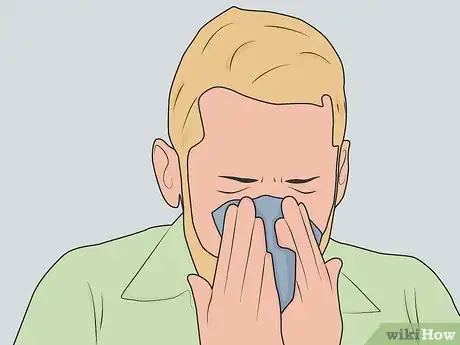







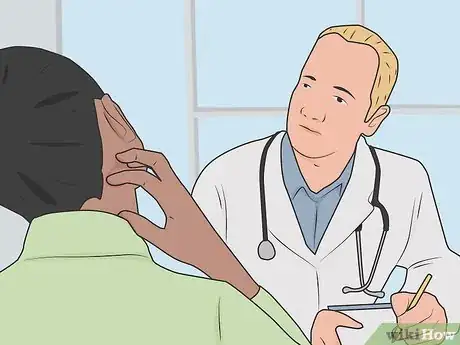

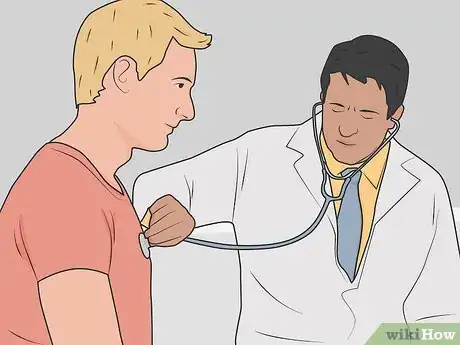


















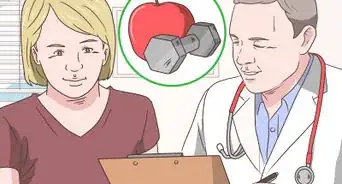
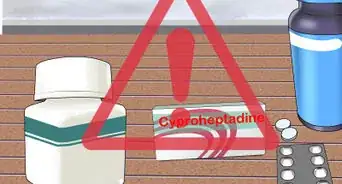















































Medical Disclaimer
The content of this article is not intended to be a substitute for professional medical advice, examination, diagnosis, or treatment. You should always contact your doctor or other qualified healthcare professional before starting, changing, or stopping any kind of health treatment.
Read More...